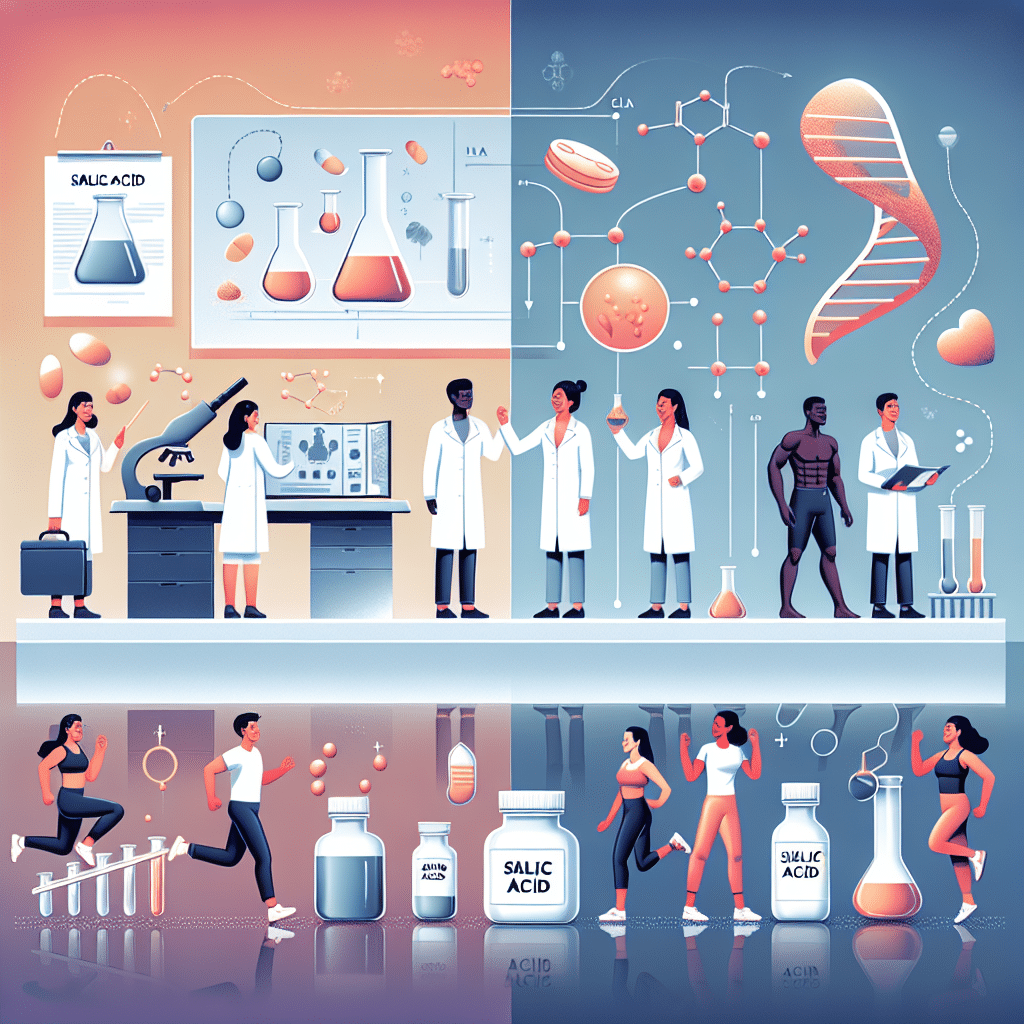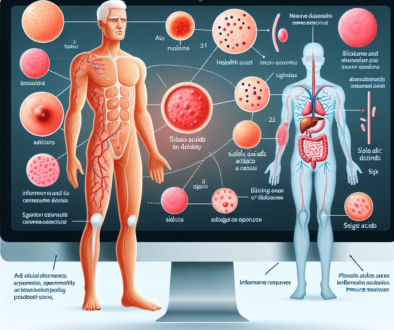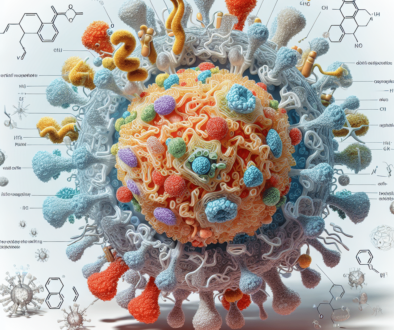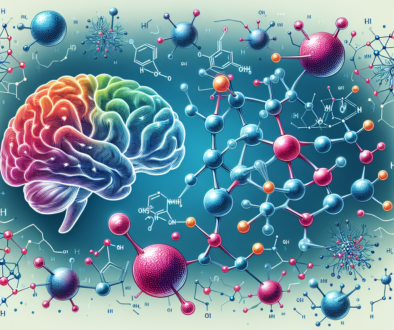Sialic Acid: From Research to Wellness
-
Table of Contents
- Sialic Acid: Unveiling Its Potential in Health and Wellness
- The Science Behind Sialic Acid
- Research Advancements in Sialic Acid
- Sialic Acid in Wellness and Nutrition
- Case Studies and Statistics
- Challenges and Future Directions
- Conclusion: Sialic Acid’s Role in Shaping Wellness
- Enhance Your Health with ETprotein’s Premium Protein Products
Sialic Acid: Unveiling Its Potential in Health and Wellness

Sialic acid, a term that may not be widely recognized outside scientific circles, is a crucial molecule that plays a significant role in various biological processes. This naturally occurring carbohydrate is found on the surfaces of cells and proteins and is involved in cellular communication, immunity, and the pathogenesis of diseases. The exploration of sialic acid’s functions and applications has opened new avenues in research and wellness, offering potential benefits that span from disease prevention to anti-aging therapies. This article delves into the world of sialic acid, exploring its importance in research and its implications for health and wellness.
The Science Behind Sialic Acid
Sialic acids are a family of nine-carbon sugars that are typically found at the outermost end of glycan chains on the cell surface. They are involved in a myriad of physiological and pathological processes, including cell-cell interaction, microbial pathogenesis, and immune response modulation. The most common form of sialic acid in humans is N-acetylneuraminic acid (Neu5Ac).
- Cellular Communication: Sialic acids contribute to the structural diversity of cell surface glycans, which are essential for cell-to-cell communication and signaling.
- Immune System Modulation: They play a role in self-recognition by the immune system, helping to distinguish between the body’s own cells and foreign invaders.
- Disease Pathogenesis: Pathogens such as bacteria and viruses often exploit sialic acids to attach to and invade host cells, which is a key step in the infection process.
Research Advancements in Sialic Acid
Scientific research has made significant strides in understanding the role of sialic acid in health and disease. Studies have shown that altered sialic acid expression is associated with several diseases, including cancer, where tumor cells often exhibit increased levels of sialylated glycans, aiding in metastasis and immune evasion.
- Cancer Research: Therapies targeting sialic acid pathways are being investigated as potential cancer treatments, aiming to disrupt the ability of cancer cells to spread and avoid immune detection.
- Infectious Diseases: Understanding how pathogens utilize sialic acid has led to the development of antiviral drugs and vaccines that block these interactions.
- Neurological Studies: Sialic acid is abundant in the brain and is believed to be important for cognitive function and neural development, making it a focus in neurological research.
Sialic Acid in Wellness and Nutrition
The interest in sialic acid extends beyond the laboratory and into the realm of nutrition and wellness. Dietary sources of sialic acid, such as breast milk, are believed to contribute to the healthy development of infants, particularly their cognitive functions and immune systems.
- Infant Nutrition: Human milk oligosaccharides (HMOs), which are rich in sialic acid, are thought to support brain development and protect against infections in infants.
- Dietary Supplements: Sialic acid supplements are being explored for their potential to support immune health, improve cognitive functions, and promote anti-aging effects.
- Anti-Aging Potential: Due to its role in cellular mechanisms, sialic acid is being studied for its potential in anti-aging skincare products to improve skin hydration and elasticity.
Case Studies and Statistics
Several case studies and research findings underscore the potential benefits of sialic acid in health applications:
- A study published in the Journal of Nutrition found that dietary sialic acid supplementation in rats led to improved learning and memory abilities, suggesting similar benefits might be possible in humans.
- Research on HMOs indicates that infants fed with breast milk, which is naturally high in sialic acid, tend to have better cognitive development compared to those fed with formula lacking these compounds.
- Statistics from the World Health Organization highlight the importance of breastfeeding, partly due to the presence of beneficial compounds like sialic acid, which are not present in standard infant formulas.
Challenges and Future Directions
While the potential health benefits of sialic acid are promising, there are challenges to be addressed:
- Synthesis and Availability: The complex synthesis of sialic acid and its derivatives poses a challenge for large-scale production and affordability.
- Clinical Trials: More extensive clinical trials are needed to fully understand the therapeutic potential and safety of sialic acid supplementation.
- Regulatory Hurdles: Regulatory approval for new sialic acid-based drugs and supplements can be a lengthy and complex process.
Future research is expected to focus on overcoming these challenges, improving the synthesis of sialic acid, and exploring its full range of applications in health and wellness.
Conclusion: Sialic Acid’s Role in Shaping Wellness
In conclusion, sialic acid is a fascinating molecule with significant implications for health and wellness. From its critical role in cellular communication to its potential in disease prevention and treatment, sialic acid continues to be a focal point of scientific research. As we gain a deeper understanding of its functions and benefits, we can expect to see more applications of sialic acid in nutrition, therapeutics, and anti-aging products. The key takeaways from this exploration of sialic acid are its versatility in biological processes, its emerging role in wellness, and the ongoing research that aims to harness its potential for improving human health.
Enhance Your Health with ETprotein’s Premium Protein Products
If you’re looking to incorporate high-quality protein into your diet, ETprotein offers a range of organic bulk vegan proteins that can complement your wellness journey. Their products, including various plant-based proteins and L-(+)-Ergothioneine, are designed to meet the needs of various industries and consumers who are conscious about their health and nutrition.
About ETprotein:
ETprotein, a reputable protein and L-(+)-Ergothioneine (EGT) Chinese factory manufacturer and supplier, is renowned for producing, stocking, exporting, and delivering the highest quality organic bulk vegan proteins and L-(+)-Ergothioneine. They include Organic rice protein, clear rice protein, pea protein, clear pea protein, watermelon seed protein, pumpkin seed protein, sunflower seed protein, mung bean protein, peanut protein, and L-(+)-Ergothioneine EGT Pharmaceutical grade, L-(+)-Ergothioneine EGT food grade, L-(+)-Ergothioneine EGT cosmetic grade, L-(+)-Ergothioneine EGT reference grade and L-(+)-Ergothioneine EGT standard. Their offerings, characterized by a neutral taste, non-GMO, allergen-free attributes, with L-(+)-Ergothioneine purity over 98%, 99%, cater to a diverse range of industries. They serve nutraceutical, pharmaceutical, cosmeceutical, veterinary, as well as food and beverage finished product distributors, traders, and manufacturers across Europe, USA, Canada, Australia, Thailand, Japan, Korea, Brazil, and Chile, among others.
ETprotein specialization includes exporting and delivering tailor-made protein powder and finished nutritional supplements. Their extensive product range covers sectors like Food and Beverage, Sports Nutrition, Weight Management, Dietary Supplements, Health and Wellness Products, and Infant Formula, ensuring comprehensive solutions to meet all your protein needs.
As a trusted company by leading global food and beverage brands and Fortune 500 companies, ETprotein reinforces China’s reputation in the global arena. For more information or to sample their products, please contact them and email sales(at)ETprotein.com today.














